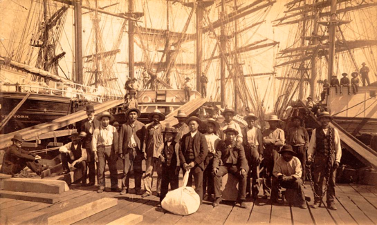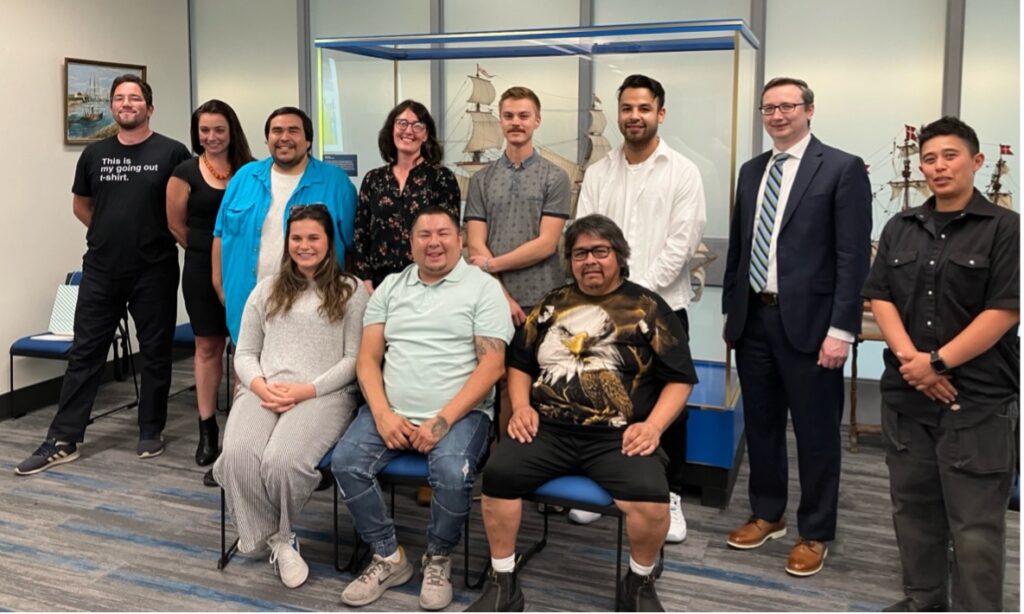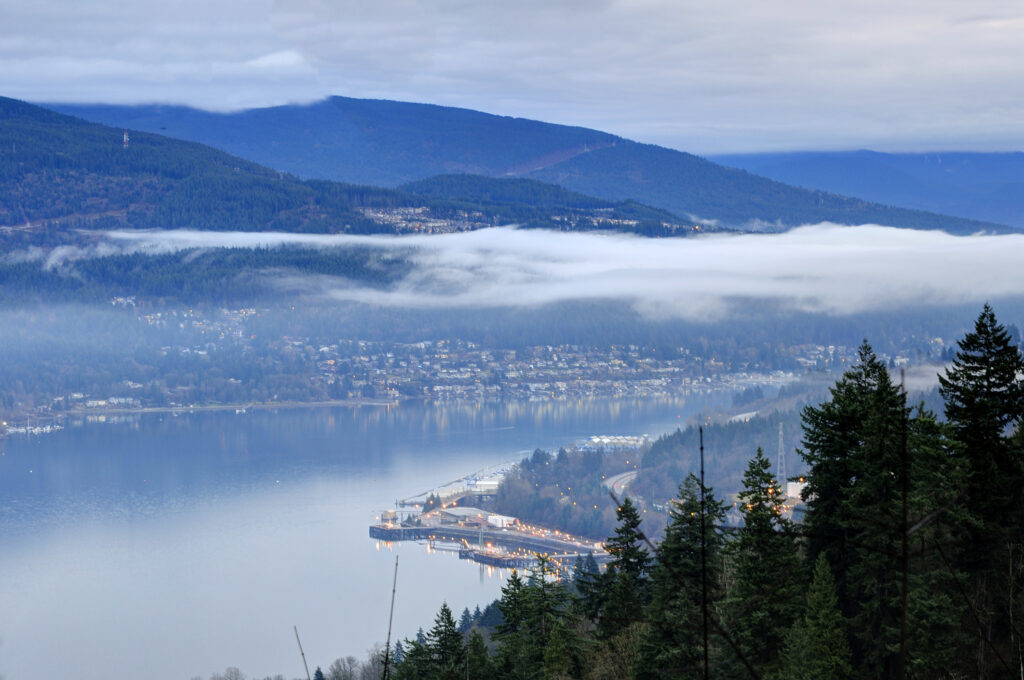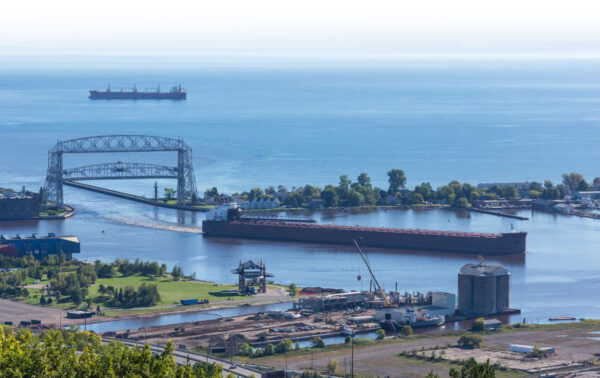Meaningful participation in Canada’s marine sector for Indigenous people – what will it take?
|
Getting your Trinity Audio player ready...
|
Indigenous people are leaders in marine stewardship living on Canada’s coastlines – and want meaningful participation in the maritime industry. Industry employers are facing an employee shortage across the sector. How can employers create an inclusive workplace to attract and retain Indigenous people?
The marine industry is a vital part of Canada’s ocean economy, but it has thousands of unfilled jobs. In this article we explore how and why Indigenous candidates are starting to fill these roles. Indigenous people are providing a much-needed injection of dynamic leadership and strong environmental stewardship to the marine industry – and we can accelerate this positive change.

An Unwelcoming Beginning
The underrepresentation of Indigenous people in the marine industry is beginning to receive greater recognition as an issue to be resolved. More than unfilled jobs or missed opportunities to develop relationships with Indigenous communities, underrepresentation of Indigenous people in the maritime sector is a failure to benefit from the generational wisdom and leadership around marine stewardship that Indigenous people offer. Bringing Indigenous people into this workforce requires certain barriers to be identified and removed. But it wasn’t always that way.

(credit: https://libcom.org/article/bows-and-arrows-indigenous-workers-iww-local-526-and-syndicalism-vancouver-docks)
Historically, Indigenous people were integral to shipbuilding, infrastructure construction, and dock working across Canada. Thousands of Indigenous workers helped build the North American economy we have today at great cost to themselves and their communities. In the early days of the industry, there were few formal qualifications or opportunities for advancement. Since then, Indigenous involvement in the marine industry has dwindled. Today’s reality is few opportunities available for Indigenous individuals, despite their heritage as marine stewards and homes in coastal communities, accompanied by a lack of information and direction. For those who do want to become involved in this field, the path to entry is challenging. However, the tide has started to turn. Clear Seas has documented efforts by the marine industry to begin a path to reconciliation. Organizations are trying to build relationships with Indigenous communities. Government-funded skills training programs have been established for Indigenous people. However, to reach a truly inclusive and diverse maritime sector, much more needs to be done.
A Pilot Program to Broaden Access Taught Valuable Lessons
In 2022 Clear Seas took action, partnering with Canada’s Ocean Supercluster (OSC), the British Columbia Institute of Technology (BCIT), the College of the North Atlantic (CNA) and the Aboriginal Career Center Employment Services Society (ACCESS) to expand the geographic scope of the Indigenous Career Pivot Program launched by OSC in the previous year.
Click here to learn more about the origins of the Indigenous Career Pivot Program
The program was conceived in Atlantic Canada to propel mid-career Indigenous people into the ocean sector. Originally, employers were granted wage subsidies to incentivize hiring Indigenous candidates. In expanding the program, Clear Seas added funded training for candidates, as well as coaching and other support as they launched their new careers. The program was delivered over an eighteen-month period and eleven candidates across the country were employed in a variety of positions from deck hand to project manager with small and large organizations including BC Ferries, Seaspan Marine, SAAM Towage, Pisces Research Project Management, SmartIce, and Indigrow.

This pilot program brought several issues to light. First, training needs to reach Indigenous individuals not only in urban areas, but also in their communities. Second, the program’s initial focus – financially incentivizing companies to hire Indigenous workers – highlighted the importance of employer commitments and revealed the need for cultural competency and a commitment to Reconciliation. Third, career paths must be sustainable so Indigenous people can remain employed in the sector even after subsidies end. Finally, more comprehensive training that emphasizes job retention, professional development, and the creation of a skilled talent pool is needed. Indigenous individuals need to be equipped with the skills and knowledge to not only secure immediate employment but also contribute to long-term growth in the blue economy, regardless of their location.
What would a more comprehensive set of resources to support Indigenous people and their employers in the maritime sector look like?
An Industry in Need of Employees
First, training needs to reach Indigenous individuals not only in urban areas, but also in their communities.
The workers that keep the Canadian marine industry moving have years of experience, but that workforce is aging fast and lacks diversity. According to the Canadian Marine Careers Foundation, within 10 years 43% of Canadian seafarers are expected to retire. In British Columbia, the marine industry provides employment for 34,250 people. In Nova Scotia, marine-related industries account for 13.3% of the province’s total employment. Quebec’s maritime sector supports 12,300 direct jobs and an additional 6,000 indirect jobs. Canada needs to hire approximately 19,000 seafarers to fill jobs from captains to deck hands on board ships, and more for critical jobs up and down the supply chain from port and terminals to shipyards and repair shops. Indigenous communities could fill many of these emerging vacancies – but only if the right programs are in place to recruit and train them.
Many Indigenous communities are located on the coast close to areas of industrial activity. Hiring from these communities would strengthen relationships between community and industry. As Janelle Caballero, Director of Cluster Workforce Growth at Canada’s Ocean Supercluster, emphasizes, “in addition to collaboration, community building, and knowledge keeping, Indigenous rights holders bring a wealth of innovation to the table. The ideation and creativity that is brought forth from their knowledge systems base and unique perspective leads to creation and execution of concepts that are foundationally different from what has traditionally been seen in the industry”. Hiring Indigenous people provides more benefits than just filling vacant positions.
Truth and Reconciliation Commission Canada issued Calls to Action. Action 92 calls on businesses to provide equitable access to jobs, training, and education opportunities. In response, many organizations are starting to recruit Indigenous people into their workforce as part of their strategy for Reconciliation. It isn’t just a priority; it is an opportunity to be better and do better in an industry that struggles with diversity. It is an opportunity to benefit from the leadership and generational wisdom around marine stewardship that Indigenous people can offer.
Employers Need Training Too
Second, the program’s initial focus – financially incentivizing companies to hire Indigenous workers – highlighted the importance of employer commitments and revealed the need for cultural competency and a commitment to Reconciliation.
Recognizing the benefits of hiring Indigenous candidates, many companies are asking what they need to do to get started. Putting up a “help wanted” posting on the nearest job board is not enough. The process of becoming a welcoming employer for Indigenous candidates is a journey that starts with good intentions and requires hard work and training on the part of the employer.
Engaging with employers in the marine industry reveals varying degrees of cultural competency and awareness. While some have a strong understanding and actively seek to integrate Indigenous candidates and their perspectives, others can lack an understanding of the benefits, and the significance, of hiring Indigenous people. Becoming a culturally competent employer requires a holistic commitment to transformation – a continuous journey that necessitates substantial effort, education and ongoing cultural competency training. Organizations will be at different points along their Reconciliation journey – it is a continuum.
The good news is that specialized training and education to cultivate a culturally safe and inclusive workspace for Indigenous peoples is now becoming more widely available. Introductory training providing an understanding of Indigenous history within Canada is a start, but employers need to be committed to go further. Familiarity with the Truth and Reconciliation Commission of Canada: Calls to Action and the United Nations Declaration of the Rights of Indigenous Peoples (UNDRIP) helps employers implement these frameworks to support Reconciliation and Indigenous communities. It’s more than just hiring practices; their actions influence Indigenous socioeconomics, culture, and natural environment. Employers who understand and actively engage Indigenous people show true commitment to Reconciliation by listening to Indigenous voices, respecting their rights, and fostering inclusive workplaces that honour diverse cultures.
Wage Subsidies Recognize the Investment from Employers
Including wage subsidies in a diversity or inclusion program can be controversial. Critics say subsidies incentivize a cycle of short-term hiring for entry-level positions. Others say it is just another handout. So, can wage subsidies help?
Employer investment in diversity and inclusivity can be significant. Training staff in cultural competency could cost thousands of dollars. Providing time off for Indigenous employees to continue training and development is time not spent on core work. This time and effort devoted to creating an inclusive culture should be rewarded, and attaching a wage subsidy to the hiring of Indigenous employees can recognise that investment by organizations. In the case of small and medium-sized enterprises (SMEs), this is even more acute, because time and resources are often stretched.
Wage subsidies are also a way for employers to top up the salaries of newly hired Indigenous employees. Indigenous candidates may initially lack the formal certificates required for higher rates of pay. Many areas of Canada’s coast are remote with a high cost of living and few other options. That higher pay represents what’s needed to get by. Wage subsidies can therefore be used by employers to offer a fair wage to Indigenous candidates while they work on acquiring the training and qualifications their workmates already have.
It’s crucial, though, to avoid the common pitfall of a short-term entry-level employment cycle once subsidies end. Subsidy programs need to emphasize the creation of sustainable, long-term employment opportunities – and verify that employers are delivering. In this way, wage subsidies can be one element of establishing a more inclusive and supportive marine sector, benefiting both employers and Indigenous employees alike.
Indigenous Employees Need Ongoing Support to Succeed
Third, career paths must be sustainable so Indigenous people can remain employed in the sector even after subsidies end.
Our pilot program provided many lessons. Foremost is the recognition that the first job could be a gateway to a lifelong career within the marine sector. Central to this trajectory, we discovered, is the provision of holistic support and job coaching to Indigenous candidates. Mentorship programs and supportive networks can serve as practical guides and emotional anchors, helping candidates navigate the complexities of the industry.
Job placement should not be the end goal. Providing Indigenous individuals with opportunities for upskilling and obtaining micro-credentials will enhance their qualifications and ultimately, their earning potential. This proactive approach not only opens doors to higher-paying roles with ongoing support for career advancement, but also leads to a sustainable, inclusive marine sector.
Empowering Training Providers for Inclusive Maritime Opportunities
Finally, more comprehensive training that emphasizes job retention, professional development, and the creation of a skilled talent pool is needed. Indigenous individuals need to be equipped with the skills and knowledge to not only secure immediate employment but also contribute to long-term growth in the blue economy, regardless of their location.

A key aspect of sustainable career paths is comprehensive training to develop the pool of skilled talent the marine sector requires to fill jobs and respond to the demands of the rapidly developing blue economy.
In Canada, respected maritime training institutions like The Western Arctic Marine Training Centre in the Northwest Territories, the College of North Atlantic and the Marine Institute (MI) in Newfoundland, the Institut maritime du Québec (IMQ) in Québec, Georgian College in Ontario, and the British Columbia Institute of Technology (BCIT), North Island College, Western Maritime Institute and Camosun College in BC attract trainees seeking marine-related courses. These programs require extensive classroom-based learning in urban centres. The costs of tuition, travel, and time can make marine courses inaccessible for Indigenous people, especially those living in remote communities.
Julia Fields, Executive Director of the Canadian Marine Careers Foundation, notes challenges in changing the current approach: “Marine training members seek [to offer] enhanced training programs with options like asynchronous learning, mobile, and virtual reality training delivery. Many changes to the curriculum or delivery methods will require approval from Transport Canada as well as investment from federal and provincial governments and collaboration with marine employers.”
The future of marine training needs to address the historical barriers that have previously limited Indigenous people’s access to these programs. In the next iteration of our program, we aim to advocate and develop specialized training programs designed for Indigenous individuals and their communities, along with the essential skills required for long-term employment in the marine industry.
Our pilot program successfully placed 8 Indigenous candidates within the marine workforce in 2022, following training in BCIT’s Bridge Watch Program (BWR-E). Through that experience, we uncovered challenges and costs Indigenous people face when relocating to urban centers for training. Not only are these individuals separated from their families and communities for a period of time, they are coming from remote locations and facing bureaucratic barriers such as complex administrative processes, medical certificates, high school graduation requirements and other pre-requisites that may not be available – easily or at all – in their home communities.
Reflecting on the success of BCIT’s blended BWR-E program, Debbie Power, Program Coordinator at BCIT, highlights its impact on Indigenous students explaining, “blended learning provides the opportunity to bring learning to remote Indigenous communities whether it is to attend a program or complete educational prerequisites.” She also noted a challenge to this approach: “There needs to be more collaboration to ensure that all communities have equal access to stable, affordable internet”. The program’s blend of online learning for the first half followed by on-campus learning reduced costs and eased anxieties upon arrival at the campus as participants had been developing relationships with classmates online. While advantageous in minimizing family displacement and promoting tech familiarity, challenges persist, such as internet accessibility in rural areas.
In response to these challenges, Clear Seas’ program seeks to facilitate specialized training programs brought directly to remote Indigenous communities. This approach will eliminate the costs associated with relocation and simplify administrative procedures for communities. More collaboration is needed to provide access to healthcare providers for medical certificates and flexible education pathways to enable entry into these marine training programs without traditional high school diplomas. These initiatives require a concerted effort by the industry to create more accessible pathways and will foster greater inclusion for Indigenous individuals seeking opportunities within the marine sector.
Outreach and Publicity to Create Awareness and Demand
Outreach and publicity initiatives hold significant potential in attracting Indigenous people to the marine industry in Canada. The first challenge is creating awareness by spreading the word about these opportunities. Many people miss out on enrolling in marine training programs simply because they don’t know about them. Online job postings for marine-related jobs often lack information about the educational requirements to succeed in the industry. Recruiting efforts may overlook or unintentionally exclude groups like young people, women, and Indigenous individuals by not identifying accessible pathways to entry or highlighting the long-term career opportunities available.
Most importantly, outreach efforts must incorporate cultural sensitivity and inclusivity by engaging with Indigenous communities in a respectful manner, acknowledging their distinct cultures, traditions, and values. To bridge this gap, Clear Seas will work with program partners to organize marine career workshops and connect with communities to showcase the diverse opportunities within the sector.
Commitment and Collaboration are Key
The marine industry in Canada needs to change to foster meaningful Indigenous participation. Despite thousands of vacant job positions, Indigenous individuals are slow to enter the field. The industry’s growth, historically without Indigenous consultation or meaningful involvement, has negatively impacted Indigenous lands and waters. Addressing these wrongs is an act of Reconciliation, requiring recognition of past and ongoing barriers as well as efforts to break down these barriers.
By providing access to marine training and career opportunities in remote communities, we can begin to address past injustices. Creating flexible educational pathways signifies a proactive step towards an environment where Indigenous participation is valued, supported, and integrated for the sustainable growth of the industry. Employers must undergo cultural competency training to develop inclusive workplaces. And finally, showcasing long-term career prospects and providing culturally relevant outreach to Indigenous individuals and communities are essential steps toward realizing a more diverse and inclusive marine sector. Collaboration and commitment from employers and academic institutions to achieve these goals are vital.
At Clear Seas, we seek to be the bridge connecting employers, academic institutions, and Indigenous candidates. Collaboration is essential as we launch the next iteration of our Indigenous employment program. We want to extend and strengthen our network, inviting all who share our vision to actively participate and contribute. Involvement from everyone in the marine sector is required to move Reconciliation forward, open doors for greater collaboration, and foster meaningful change within the marine industry.
Join us as we strive to create diverse workplaces with inclusive pathways for Indigenous people and communities to join the marine sector.
For more information:
Contact:
Stephanie Hurlburt
Indigenous Program Lead
stephanie.hurlburt@clearseas.org
778.730.1369



